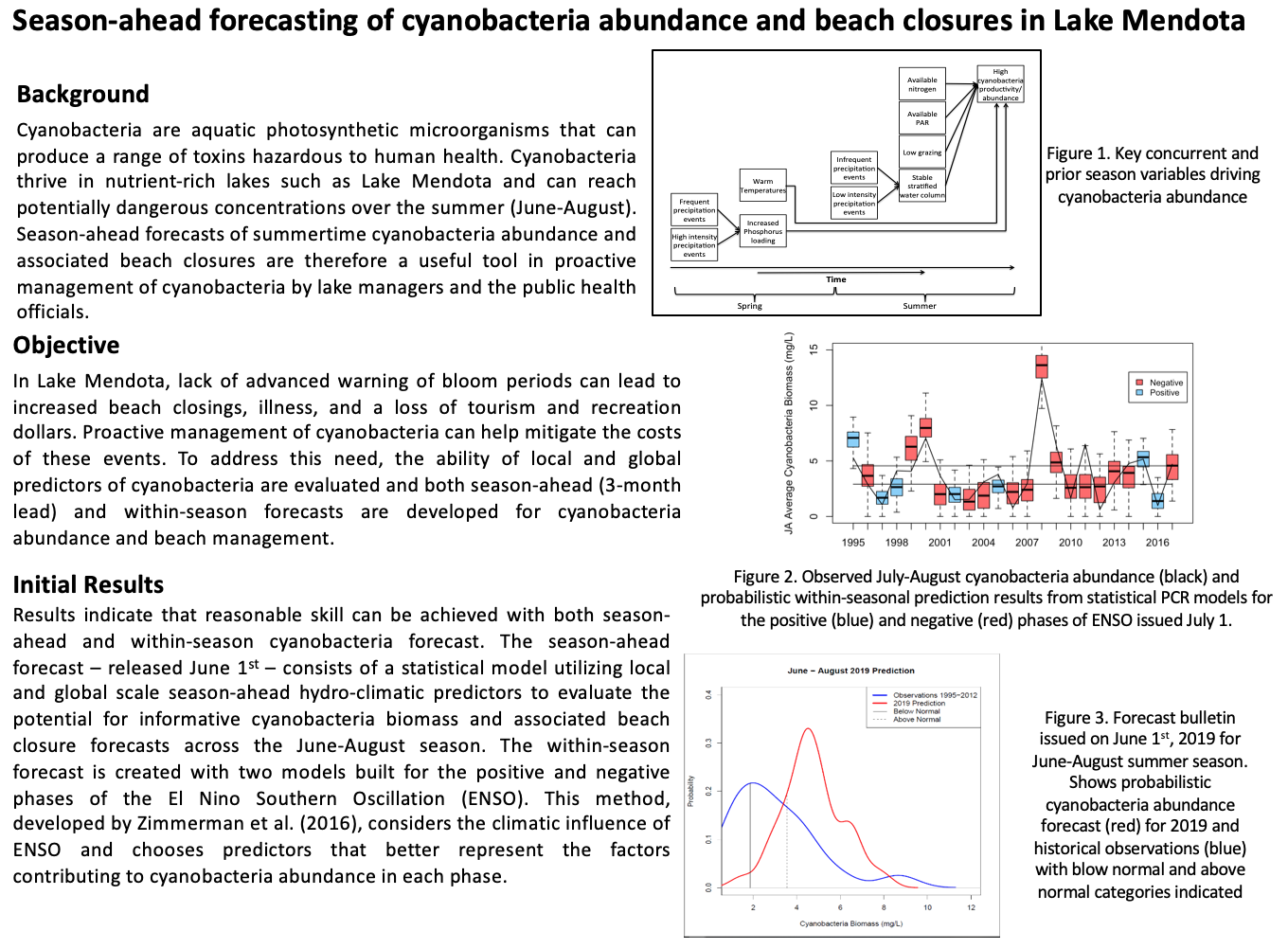Funding Agency: NSF
Award Period: 2019-2024
Eutrophication is the excessive accumulation of nutrients in bodies of water leading to overly dense blooms of plants and algae. Intensification of agricultural and urban practices in recent decades has led to the eutrophication of many inland lakes and streams. Cyanobacteria (also known as blue-green algae) often thrive in such nutrient-rich waters. Excessive growth of cyanobacteria can cause ecological, aesthetic, and health hazards, and may cause disruptions to drinking water systems, foul beaches, and produce toxins dangerous to human and aquatic life. Lake managers would like to predict the intensity of cyanobacteria abundance and overall ecosystem health prior to the summer season, but current methods for doing so are limited, often leading to only reactive lake management and recreational and beach safety. This research and education project will explore methods to better predict cyanobacteria abundance from hydroclimatic variables (such as temperature, precipitation and streamflow) to enable better lake management.
The objective of this research is to answer four questions: Q1. How well can season-ahead prediction models conditioned on hydroclimatic variables (explicitly or in conjunction with biological factors) anticipate cyanobacteria abundance? Q2. Can physically-based models coupled with prediction models further enhance predictability and lead toward an improved understanding of local environmental and biological mechanisms? Q3. Can prediction models be extended to describe expected bloom formation and seasonal beach closings to inform beach planning and management? Q4. Is the prediction framework transferable and how well does it perform for various eutrophic lakes, particularly ones that are less well monitored? Research themes will be integrated into educational objectives designed to promote learning and development across several age groupings to: 1) foster citizen science participation, training, and analytical skills; 2) excite and prepare students and teachers from middle school through graduate school; and 3) enhance local agency decision-making capacity. These goals will be accomplished by introducing new water quality tests for citizen science monitors, developing new games and simulations targeting middle and high school students for delivery at science fairs and after school programs, hosting research retreats, and providing models, tools, and trainings to local agencies.
Summary of Current Research

